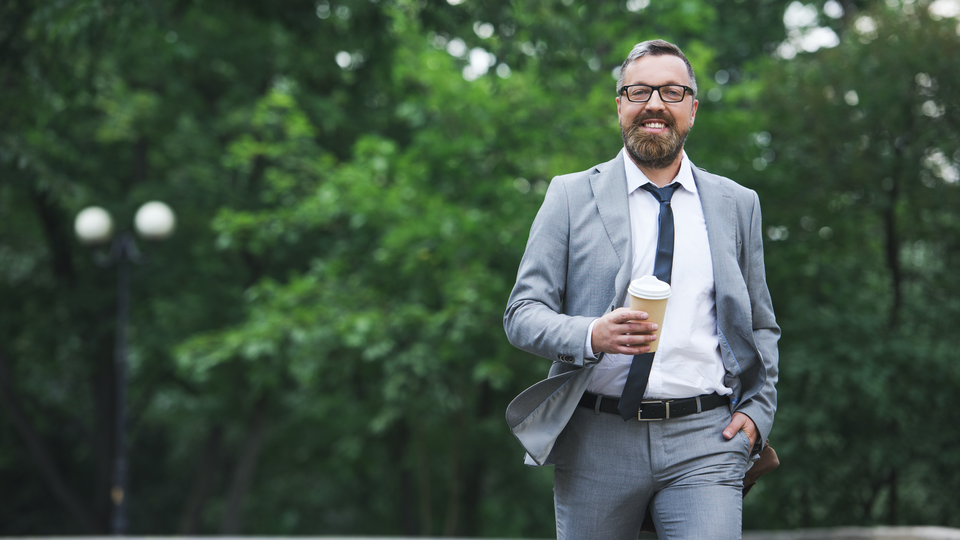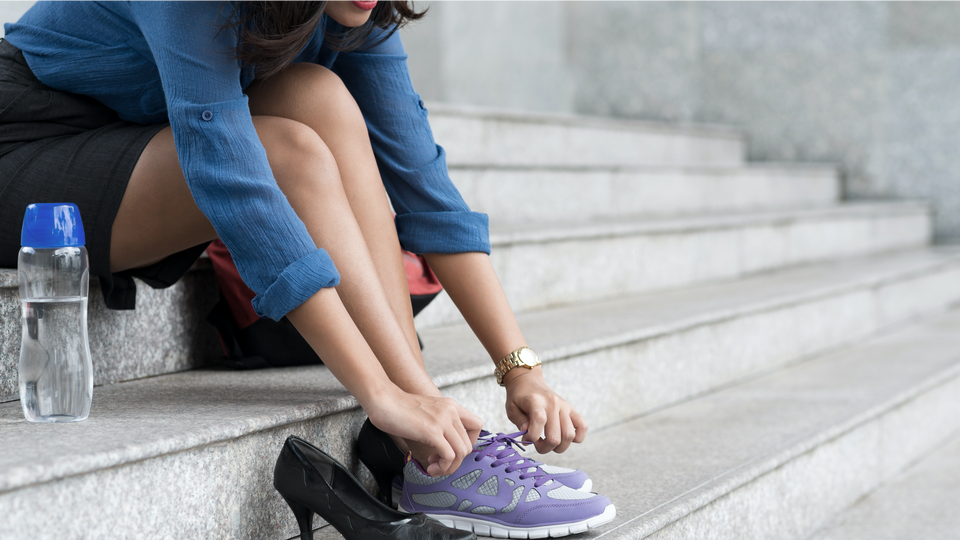For maximum creativity, put your best foot forward
Walking is a proven thought-starter and mind-clearer, and perfectly suited to life on the road.

Creativity and innovation are central to almost every role in today’s business environment, and the secret to unlocking your creative genius could be as simple as placing one foot in front of the other.
It’s a habit some of the greatest minds have capitalised on for centuries. “All truly great thoughts,” wrote philosopher Friedrich Nietzsche, “are conceived while walking.” In similar fashion, Henry David Thoreau observed: “The moment my legs begin to move, my thoughts begin to flow.”
Science backs a good stroll
Researchers have evidence to corroborate the habits of the greats. A series of experiments at Stanford University explored the effects of walking and sitting on creativity. Participants were able to devise more creative ideas when they were walking.
These studies also compared the benefits of walking inside to walking outside. Outdoor strolls produced the most original and highest-quality ideas. What’s more, the creativity benefits of walking continued even when participants sat down afterwards.
If you have ever worried the years aren’t being kind to your brain, walking could be especially helpful.
A 2016 study tested the creativity of older versus younger adults. Sometimes they followed a rectangular path, and sometimes they walked freely within that rectangle. By “free-walking” without following the path, the older adults even outperformed the younger adults following the rectangle.
Why does walking work?
One reason walking makes us sharper might be because it occupies our brains. When our minds are busy thinking about where we’re walking, and consequently not as focused on old ideas, it allows the free flow of more original thoughts. This might explain why “free-walking” is better for creativity than following a pre-determined path.
Of course, there’s also the physical effects of walking. More blood flow through the body means more blood to the brain. Not just while you’re huffing and puffing, but throughout the day – if you make walking a habit.
Researchers in New Zealand assessed the exercise habits of healthy young women. Then the women performed challenging mental tasks, where they had to respond quickly and accurately. At the same time, the researchers monitored the oxygen levels in the participants’ brains.
The fitter women had more oxygen flow to the “thinking” area, located at the front of their brains. They also scored significantly better on the mental task. While walking isn’t the only way to increase fitness, it is the most accessible.
Other theories seek to explain walking’s influence on creativity. One involves the types of brain waves it elicits. Another implicates brain chemicals released by walking, such as dopamine, serotonin, and brain-derived neurotrophic factor. While research continues, it’s clear walking has several pathways to work its mental magic.
Getting instant inspiration on the road
Put your best foot forward when you travel by packing shoes that are comfortable to walk in. You can further increase your odds of covering some distance by booking a hotel within walking range of most places you’ll need to be.
For an immediate performance boost before a key meeting, try walking there while mentally running through the agenda. If appropriate, you could even suggest a walking meeting. The walk could be to a café 10 minutes away, along a river or through the city’s botanic gardens.
Walking meetings have the benefit of not cutting into your work time. In fact, they can make your meetings more efficient. And in some cases, walking and talking makes it easier to communicate than facing off over the boardroom table.
If you’ve reached a creative dead-end in a meeting or when working alone at your laptop, why not step away? A quick circumnavigation of the block could free up your mind to generate novel solutions.
At the airport, there is almost always time for a 10-minute walking tour of the terminal. You can invigorate your thinking before sitting down to tackle a tricky email.
Maintaining long-term brain fitness
Whenever travelling, capitalise on small opportunities to maximise enduring brain health. A daily constitutional is a tried-and-tested method to start or finish a productive day. Your stroll might take you sightseeing around your hotel, or to that evening’s restaurant.
For the best long-term results from your efforts, a bit of exertion is required. Walk at a decent clip. Climb a hill. Conquer the stairs.
For extra motivation to increase your walking, a smartwatch, fitness band or phone app can record your daily steps for you. A daily goal of 10,000 steps is a popular one.
Alternatively, you could start by tracking your typical number of steps over a week, and then building on that. Every few minutes of walking quite literally adds up.






Hi Guest, join in the discussion on For maximum creativity, put your best foot forward